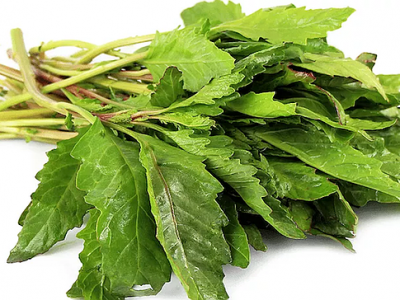

Seed Potatoes Available
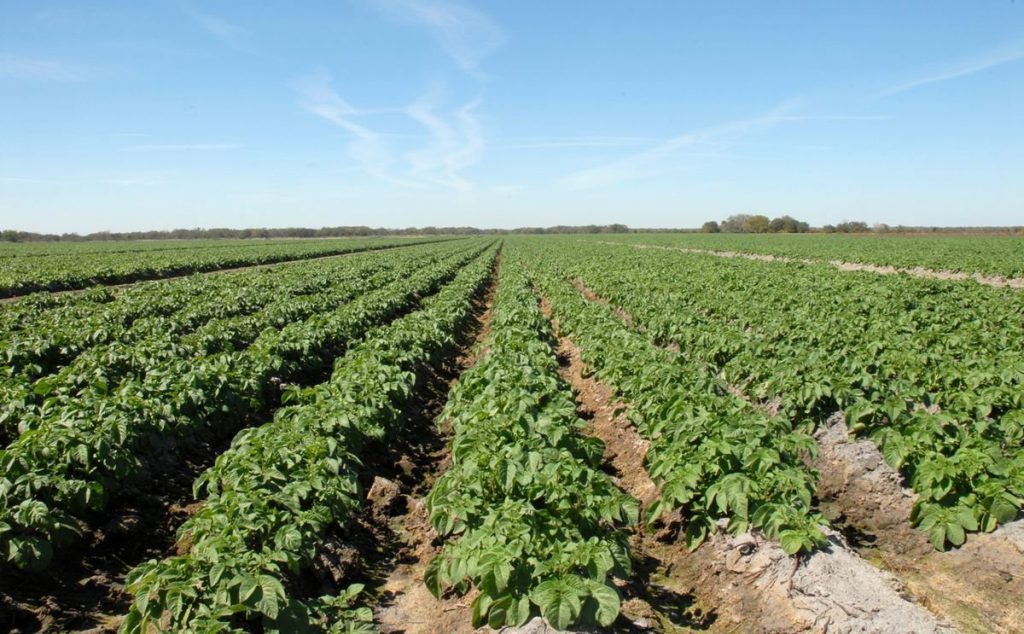
Certified Seed potatoes ( Solanum tuberosum )will be available the weekend of February 29 & March 1. Varieties will include Adirondack Blue, Kennebec White, Pontiac Red, Burbank Russet, and Yukon Gold. Price is $1 per lb.
Email: farmerjohn@coinjockcreek.com
Text: Name, variety, & quantity to (252) 267-3332
Seed Preparation

Approximately one week prior to planting, you will need to cut your potatoes into seed size pieces. For larger seed potatoes, cut the “seed” into small pieces (golf ball size), with an “eye” on each piece. For small seed potatoes, a single potato may be planted in the hole.
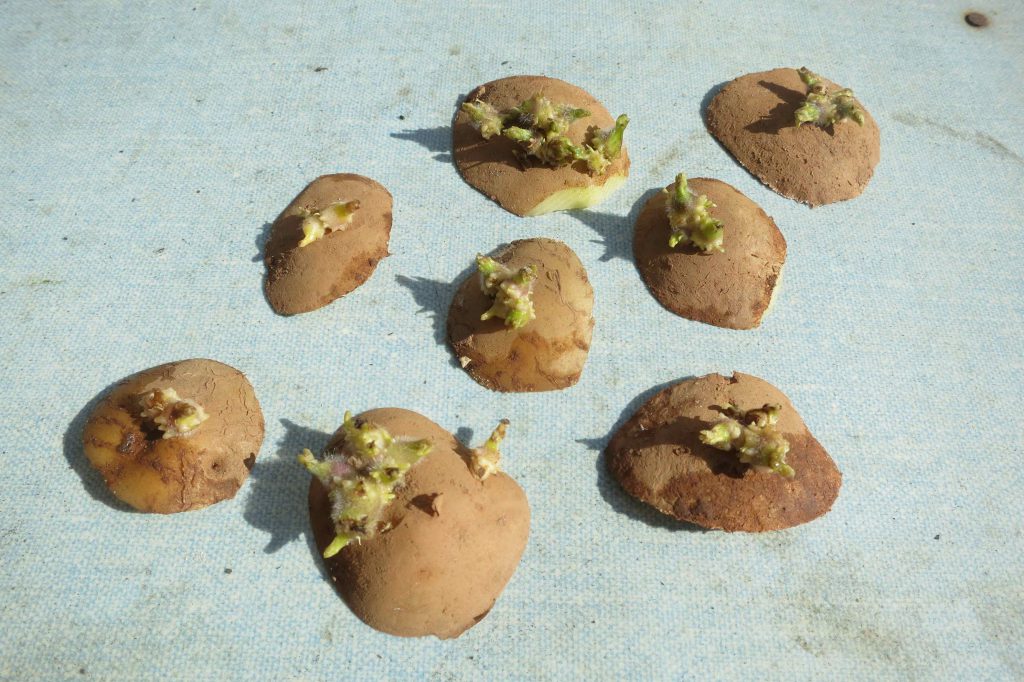
Cut seed potatoes should be stored in a cool, dry, dark place – this will allow time for the seed piece to heal; begin sprouting and prevent rot when planted. Plastic storage tubs are an excellent method of storing.
Soil Preparation
Potatoes grow best in loose well-drained loamy soil. If your soil has a high clay content or holds water, amend with regular sand, or “clay right” – Gypsum.
Soil should be tilled deeply and mounded / rowed to warm the soil and provide a growing space for potatoes.
At planting time, furrow the top of the row, or poke holes in the top of the row, using a bulb planter. Holes should be spaced, 12 – 16 inches apart and should be 4 – 6 inches in depth.
Use one pound of seed potato to plant 5-8 row feet, 2.5 pounds per 12-15 row feet, 5 pounds per 25 row feet, and 20 pounds per 100 row feet.
Walking down the row, drop a seed piece in each hole. Though it does not matter, you may chose to make sure the seed lands “eye” up – at any rate when the seed sprouts, the sprouts will turn upward.
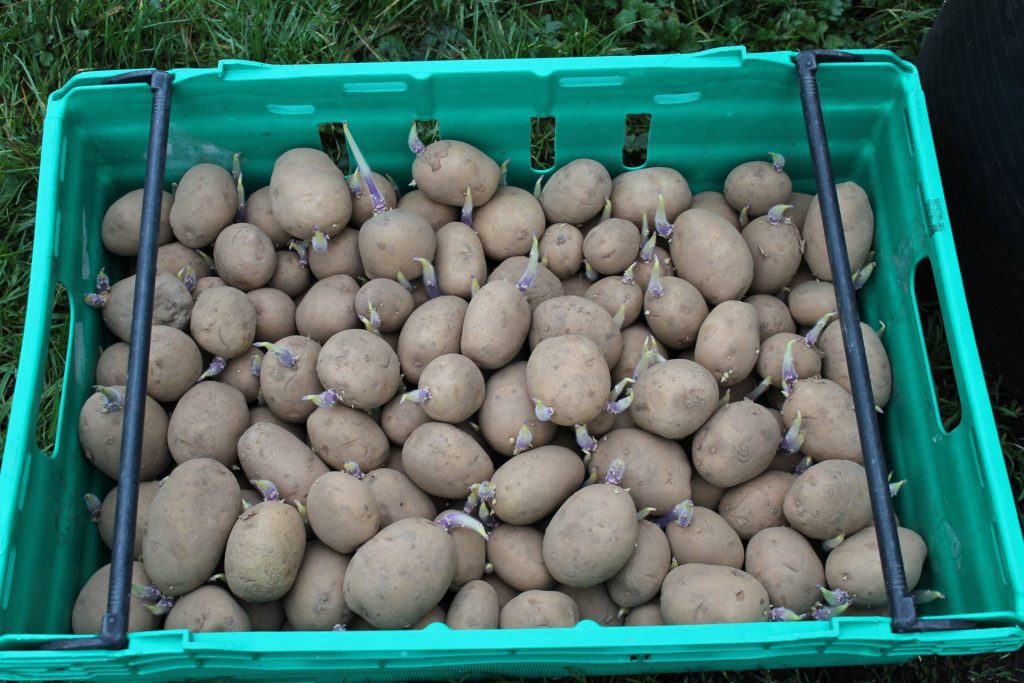
Lightly cover the seed piece in the hole – do not completely cover. Check every few days to see if the seed has sprouted, if you see sprouts, cover the sprout in the hole, until the hole is covered.
After the seeds have sprouted and started growing, pull the row back up to pull dirt to the potatoes.
Your new potatoes will grow in the hilled up dirt, along the potato stalk above the seed piece.
Nutrient Amendments
Preplant
- 1/2 cup of 10-10-10 blended fertilizer per 10 feet of row;
- 1/2 cup of 0-0-60 (Muriate of Potash) per 10 feet of row;
As potatoes are root crops, they need additional potash (essential for root development) to build strong roots.
Postplant – One month after planting
- Broadcast 2 lbs 10-10-10 per 100 sq ft of row ( 100 ft long by 1 ft wide)
Pests / Disease
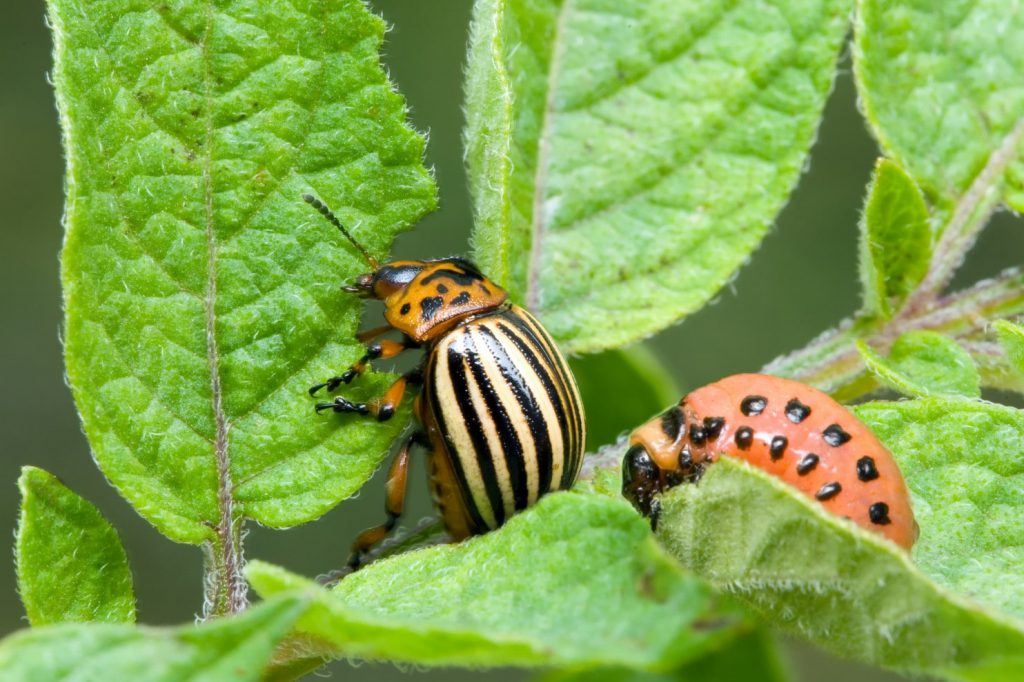
The Colorado Potato Beetle ( Leptinotarsa decemlineata ) is the most prevalent potato pest in our area. They have evolved to feed on plants in the Solanacea family – potato, tomato, pepper, eggplant, etc.
You will first see the soft looking larvae (picture at right above), followed by the adult brown and cream striped beetle. Both adult beetle and juvenile larvae are leaf chewers. A good “organic friendly” pesticide which will take care of them immediately is “Captain Jack’s Dead bug Brew” – the active ingredient in this is “SpinosAD”.
Potato disease include: potato blight, bacterial wilt, and late blight (Phytophthora infestans). Consult your agricultural extension agent for details on how to control these diseases.
Harvest
Approximately 75 – 90 days after sprouting, your potato crop should be ready for harvest. About 2 weeks after the potatoes have set blooms, you should have some small size “baby” potatoes.
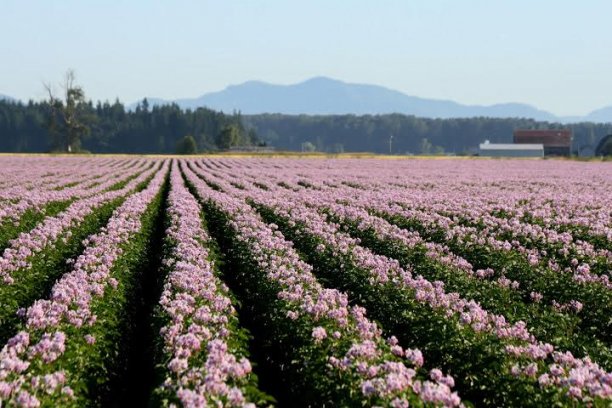
You can selectively harvest these without killing the plant by “grabbling” – the act of slipping your hand into the row top and feeling for potatoes. When you feel one, you simply extract it gently leaving the potato plant intact.

When you are ready to harvest bunches of poatoes, grab the potato vine in one hand and using a “potato fork” or a “manure fork” gently dig deep beneath the vine. One potato plant can produce 3 – 5 lbs of potatoes – depending on soil, nutrients, weather, and rain.
You do not have to dig all potatoes at once, they will keep in the row top for one or two months – just remember, mice, groundhogs and other critters also enjoy fresh potatoes!
Storage and Care
DO NOT wash your potatoes – this may damage the skin which protects the interior. Store your potatoes in a cool dry place, allowing the dirt to dry and fall off naturally.

